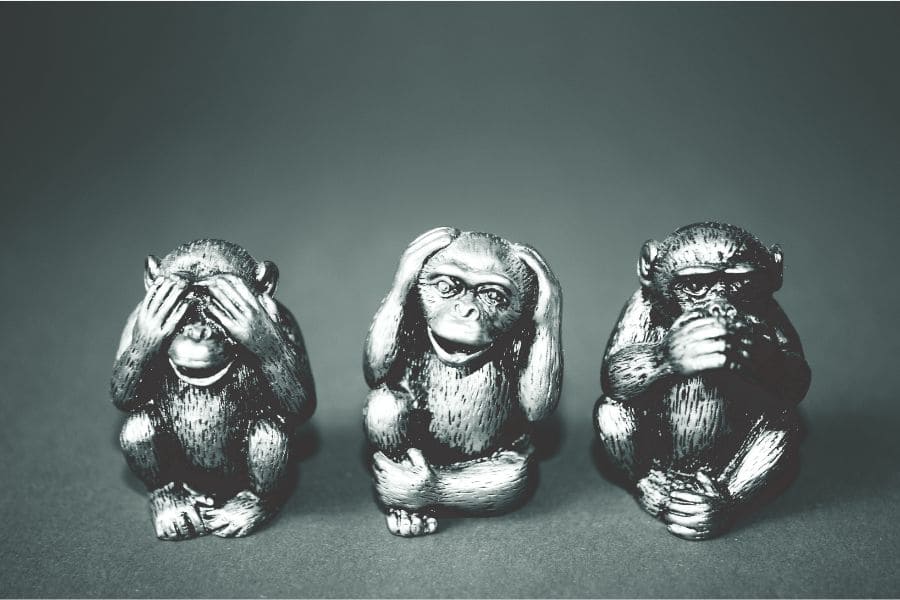So you want to turn heads and grab attention with clever guerrilla marketing tactics?
Successful guerrilla marketing is all about unconventional tactics that deliver a significant impact.
Want to know the secret sauce?
Well, we’ve prepared a lineup of genius guerrilla marketing tactics to turbocharge your growth.
So buckle up, and let’s dive right in!

What is Guerrilla Marketing?
At its core, guerrilla marketing is a concept born out of the need for low-cost, unconventional marketing strategies that yield maximum results.
The term was coined in the 1980s by Jay Conrad Levinson, who likened these unconventional, surprise marketing tactics to guerrilla warfare.
From the start, it’s been all about creating memorable experiences for the customer.
Instead of buying a billboard your potential customer might easily overlook, you can hire a street performer juggling with your product. See the difference?
With guerrilla marketing, the lines of traditional advertising are blurred, and suddenly, consumers are drawn into a real-life narrative.
Real-world examples have proven the efficacy of this approach. For instance, Red Bull, a brand synonymous with extreme sports, executed a guerrilla marketing stunt that people still talk about — they sponsored a skydiving mission from space!
Unconventional? Yes. Memorable? Absolutely! This is guerrilla marketing at its best.
But as with any marketing tactic, misconceptions exist.
Some think guerrilla marketing is only for big brands or that it’s too risky.
Here’s the truth: with a bit of creativity, any business can use guerrilla marketing, including you too!
But in order to start working on your own guerrilla marketing plan, there are a few principles you’ll need to know…
The Basic Principles of Guerrilla Marketing

Guerrilla marketing revolves around some basic principles that you’ll want to understand and master right off the bat.
Unforgettable Customer Experiences
The first principle of guerrilla marketing underscores the importance of crafting unique customer experiences, as opposed to just pushing products.
In the age of customer-centric marketing, experiences reign supreme.
Guerrilla marketing goes beyond traditional advertising to create memorable moments that resonate with customers on a personal level, stirring emotions and fostering strong connections.
Leveraging the Environment Creatively
The second principle is all about utilizing existing environments in innovative ways.
This involves identifying everyday settings that can be transformed into creative and unexpected marketing platforms.
The trick here is seeing the potential in ordinary places and turning them into extraordinary marketing arenas!
Time & Imagination over Budget
The third principle stresses that the cost of guerrilla marketing lies not in monetary investment, but in time and creativity.
Unlike traditional marketing that often involves substantial budgets, guerrilla marketing is about cleverly utilizing resources to produce impactful outcomes.
The heart of this principle lies in thinking outside the box, experimenting with new ideas, and investing time in developing creative strategies.
Total Commitment
Fourth, guerrilla marketing calls for complete commitment.
This means that once a strategy is decided upon, it should be followed through with utmost dedication.
Half-hearted attempts or inconsistency can dilute the impact of the campaign. So focus on staying the course, adjusting as necessary, but never wavering from the end goal.
Giving People Stories to Share
Lastly, guerrilla marketing revolves around giving people stories to share, rather than just products to use.
People love a good story and are more likely to share it with others. So, the aim is to create campaigns that give your audience a narrative to talk about.
It’s the most fun and natural way to amplify your brand’s reach and influence.
The Key Types of Guerrilla Marketing Every Marketer Should Know

All guerrilla marketing tactics are powered by one or more of the following principles…
Ambient Marketing
Ambient marketing exploits elements of the environment to communicate a message.
This tactic is all about drawing customers in with a subtle, yet compelling, surprise that makes them do a double-take.
Imagine walking into a park and seeing a bench shaped like a gigantic candy bar.
That’s ambient marketing for you — it seamlessly blends in with the environment, catching the attention of passers-by and making them think about the brand in a fun, memorable way.
Experiential Marketing
Another powerful type of guerrilla marketing is experiential marketing.
It revolves around immersing consumers in a hands-on, interactive experience that stirs their emotions and fosters deep connections with the brand.
This could range from an engaging pop-up event to a high-tech virtual reality game.
The goal here is not just to promote a product, but to create an unforgettable experience that leaves a lasting imprint on the consumer’s mind.
Stealth Marketing
Stealth marketing is another guerrilla marketing type that relies on covert methods to promote a product or brand.
This can involve techniques such as undercover marketing or buzz marketing where the consumers don’t even realize they’re being marketed to.
The purpose is to create a buzz around the product or brand without revealing the true intention of promotion. It’s like a magician’s trick, where the audience is so awed by the act that they don’t realize it’s a trick until the magician reveals it.
Alright, let’s take this a notch higher.
Armed with an understanding of the various guerrilla marketing tactics, let’s delve into some genius guerrilla marketing strategies that brands have executed.
6 Genius Guerrilla Marketing Examples That’ll Inspire Your Own
Successful guerrilla marketing often comes from the most surprising ideas. The surprise doesn’t always lie in the message but in how it’s delivered.
So, let’s take a look at the following real-life, highly successful, genius guerrilla marketing ideas…
1. Coca-Cola’s “Happiness Machine”
Coca Cola’s “Happiness Machine” campaign is a brilliant illustration of these principles in action.
Instead of being just another soda vending machine, the Happiness Machine doled out surprising gifts like flowers, pizzas, and even sunglasses, transforming an ordinary soda-buying experience into a memorable event.
By focusing on crafting a unique customer experience, creatively using an everyday environment, prioritizing imagination over big-budgets, committing fully to the idea, and giving people an incredible story to share, this campaign checked off every box in the guerrilla marketing playbook.
2. Bounty’s Giant Popsicle
In a brilliant demonstration of its product’s efficacy, Bounty created a massive, melting popsicle in the heart of a bustling city square.
This wasn’t just a popsicle, though; it was a creative testament to the strength and absorbency of their paper towels.
As the larger-than-life popsicle melted in the summer sun, Bounty’s team was on hand to clean up the mess, thereby showcasing the product in action in a fun, interactive way.
Now, this idea brings to the forefront the core benefit of Bounty’s paper towels — its superior absorbency.
The key takeaway from this is that your guerrilla marketing campaign should clearly communicate the main benefit of your product, albeit in a fun and interactive way.
The giant popsicle wasn’t just eye-catching; it also brought to life the product’s core proposition in a very memorable manner.
3. Deadpool’s Tinder Profile
When it came to promoting the movie Deadpool, the marketing team took a route less traveled.
They created a Tinder profile for the lovably irreverent character, Deadpool, bringing the comic book character to life on a platform where audiences least expected it.
This added a humorous and real-life touch to the marketing campaign, effectively blurring the lines between reality and fiction.
The success of this strategy hinged on knowing where their audience ‘lived’ online and infiltrating those spaces with something unexpected yet delightful.
Deadpool’s presence on a dating app not only made users chuckle but also created a word-of-mouth effect as users shared this find with their friends.
Here, the lesson is understanding your target audience’s habits and interests and leveraging that knowledge to create a memorable interaction with your brand.
4. Frontline’s Interactive Floor Ad
Frontline, a company that produces flea and tick prevention products for pets, turned a shopping mall’s floor into a giant, interactive advertisement.
From the upper floors of the mall, shoppers looked down to see themselves as ‘giant fleas’ on a dog’s body.
This marketing strategy was not only fun but also presented a clear image of the problem that Frontline’s product solves.
By turning everyday settings into interactive marketing arenas, Frontline successfully engaged their customers and created a memorable impression.
The takeaway here is to use the environment creatively, transforming ordinary locations into extraordinary experiences.
This can lead to a more interactive relationship with your audience, which in turn, can boost recall and foster a positive brand image.
5. Fiji Water’s #FijiGirl
Fiji Water brilliantly disrupted the 2019 Golden Globe Awards by positioning a model, now known as #FijiGirl, to photobomb celebrities on the red carpet while holding a tray of their water bottles.
The resulting photographs were nothing short of hilarious and unexpected, turning the model into a viral sensation and earning Fiji Water an enormous amount of buzz on social media.
This was a prime example of stealth marketing, where the brand subtly inserted itself into an event without explicitly promoting its product.
The beauty of this strategy is its subtlety and spontaneity, which can be replicated in different contexts.
For instance, a local cafe could create a similar buzz by having an engaging mascot photobomb community events, instantly making their brand more recognizable and memorable.
6. Greene King’s Candid Videos
Greene King, a British brewery, leveraged the power of authenticity with their guerrilla marketing strategy.
They filmed patrons’ genuine reactions to their food and drinks using hidden cameras, then incorporated these authentic reactions into their marketing campaigns.
By capturing and showcasing real experiences, Greene King built a strong bond of trust with potential customers.
These candid videos served as powerful testimonials, showing potential patrons that their food and drink quality was not just marketing hype but appreciated by real customers.
What’s critical in this approach is the authenticity of the reactions captured.
So, any business looking to replicate this must ensure they maintain honesty throughout.
Change the Game with Guerrilla Marketing
Marketing isn’t easy, but you’ve got spunk and determination to see it through.
And now you’ve got several brilliant guerrilla marketing principles and ideas in your arsenal. With these, you’re not just playing the game — you’re changing it.
So, what’s your guerrilla marketing tactic going to be? Will it be bold, subtle, cheeky, or emotional?
The post What is Guerrilla Marketing? 6 Inspiring Examples (+ Key Types) appeared first on Smart Blogger.

No comments:
Post a Comment